Ahoy, squirts! Quint here with one more True Grit interview. After seeing the film I contacted Paramount and told them first and foremost I’d like to get on the phone with Roger Deakins. The first name out of my mouth was not The Coen Bros or Jeff Bridges, but their cinematographer. That shows just how taken I was with the photography of this movie.
Cinematographers are the unsung heroes of cinema. When you have a great looking movie that’s half the battle and there’s not one man, woman or child that possesses sight that could look at True Grit and call it anything but a beautiful movie.
That trend has been a constant in the career of Mr. Deakins. The Shawshank Redemption, Barton Fink, Fargo, Kundun, The Big Lebowski, O Brother Where Art Thou?, House of Sand and Fog, The Village, Jarhead, The Man Who Wasn’t There, No Country For Old Men, The Reader and The Assassination of Jesse James by the Coward Robert Ford are unquestionably gorgeously shot. Can you believe this man has never won an Oscar?
I think the chat turned out extremely well, even if Deakins believes I’ve cursed him by the end of it. Enjoy!
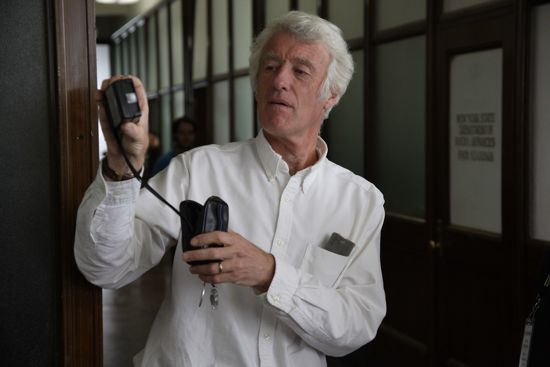
Quint: Hey there, Roger. I’m very pleased to be talking with you. I’m a big fan.
Roger Deakins: Oh, thank you.
Quint: I hate to jinx you, but I think you have the Oscar in the bag this year.
Roger Deakins: You just might have jinxed it!
Quint: If I did I apologize. I have no idea what kind of penance I could pay in exchange for that!
Roger Deakins: I’m joking completely. I just like shooting films. That’s what I care about. The rest of it… I’m just so lucky to be doing what I’m doing.
Quint: Well, you’re kinda good at what you do, so I think that might play in to why people hire you, too.
Roger Deakins: (laughs) Thank you. I’m cheap and fast, that’s what it is.
Quint: That’s what it is. You’re cheap, fast and good, the perfect combination.
Roger Deakins: I’m two out of three, don’t you know that joke? (laughs)
Quint: What’s the DP joke? Why don’t any cinematographers smoke?
Roger Deakins: I don’t know.
Quint: Because it would take them two hours to light a cigarette.
Roger Deakins: (laughs) Whoa, that’s cruel! That’s a good one.
Quint: Can we talk a little about the opening shot of the film? What I love about that shot is it immediately sets the tone and it’s beautiful to look at. One of the things I love about the look of True Grit is that it’s not afraid to look like a movie, but also feels rooted in the real world. That opening shot I think really sets the template for the film.
Roger Deakins: That was interesting because you know Joel and Ethan always storyboard everything. We discussed three or four shots of the father’s body lying there and the horse riding through.
The main shot of the horse riding by we storyboarded to be looking down the street with the boarding house on the right and the horse riding away from us. We set it up in the evening as it was getting dark. I was needing to silhouette the horse as it rode away so I was trying to get some atmosphere in the sky so I could light that and have the horse silhouetted. But it was so windy and the conditions were so against it that it just didn’t work.
So, then we decided we’d do it as a dawn shot. In the middle of the night we did these other shots that we needed and I said to the guys, “Well, let’s just do this other shot looking at the boarding house and track in over here just because we had the time to do it.”
As dawn came up we set out the original shot, shot it at dawn, and it looked great, but there was something about this shot that you see in the film… It’s so much more clear because it’s about the boarding house, the body and the horse and it’s snowing. There’s no distraction; it just tells a story.
Quint: What I love about it is that it just kind of eases you into the movie. For the first third of the shot you don’t even realize there’s a body there.
Roger Deakins: Right, right. The thing about that shot is it’s really interesting these days there’s such a crossover between the digital work you do and the live action. Obviously there’s no way we could have gotten back that far from the boarding house, so the beginning of the shot, where it’s this tiny dot out of focus appearing with the snow falling in front of it, was something we all talked about, but it was not something we could do live. That was a shot extension, it was digital.
Quint: I never would have spotted that.
Roger Deakins: Yeah, they did really well.
Quint: How early on in the process do you begin collaborating with the filmmakers, specifically the Coens since you’ve worked together so much? I have to imagine there’s a lot of trust between you guys.
Roger Deakins: I’d think so now, for sure.
Quint: I’d hope so!
Roger Deakins: I think there has been for a long time. The first film I did with them was Barton Fink and we just hit it off. I’d say we see things quite similarly and have similar tastes in a way; in terms of movies, at least.
I start with them earlier than I do with a lot of directors, usually as soon as they start thinking about where to shoot initially and do some location scouts… before even which state it’s going to be in. Not in this case… Well, it was actually, because we went to Utah to scout and at one time was really close to deciding to shoot there until we realized the weather conditions would be too uncertain.
So, I start really early on, with the initially scouts, really.
Quint: You ended up shooting a lot of the film in my home town. I’m in Austin.
Roger Deakins: Oh, right. It was split. Sante Fe and Austin were our two bases.
Quint: You settled on Texas because of Granger, right?
Roger Deakins: Yeah, we had Granger and the courthouse interior… where was that? I forgot the name of the place now, but that was Southwest of Austin; it was a very historical courthouse. We had the river, which was 2 ½ hours West of Austin, and we shot in the capitol building, which was a stand-in for the inside of the train station… There was a street in downtown Austin that stood in for Memphis. The whole film is like a collage of locations to give the overall effect.
Quint: And you guys also shot in an abandoned power plant for the snake pit sequence, right?
Roger Deakins: Yeah, that was the biggest space we could find and we had to do that as a set because, obviously, to get the camera and the action we had to be able to float the sides. So, yeah, the abandoned power plant in the middle of Austin was the biggest space we could find to do that.
Quint: I’ve never been inside, but the sign always intrigued me because it’s wonderfully art deco.
Roger Deakins: The inside is quite brutal concrete. It’s very strange.
Quint: Let’s talk a little about location photography. Most of the exteriors that weren’t Granger were New Mexico, right?
Roger Deakins: Right, apart from the river and one of the campfire sequences.
Quint: What’s the difference in your approach to the lighting for studio work and location work? Obviously in a studio you have a lot more control of the light, but how did you approach the location photography?
Roger Deakins: I don’t really have a different approach now. Obviously if you’re on stage and you’re doing a day interior then you have to recreate the light that you might have on location, but for the most part… even the courthouse, which was a location, the kind of lighting I had to do… Because you start shooting at 7 or 8 in the morning and you go to after dark in the evening, you can’t rely on the daylight anyway, so basically you light it for continuity and the way you want it.
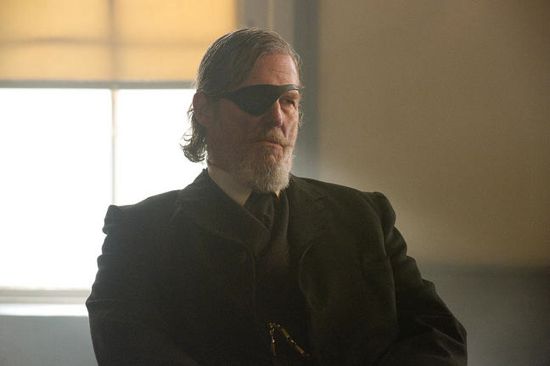
So, I lit that basically as I would have lit it on stage, except on location you’re in a building on the second floor so you have all that complication of getting the lights up to the height of the windows and everything else. And controlling the daylight because we had to cut the natural sunlight off the windows of the courthouse and create our own look otherwise, obviously, the sun’s going to move so much during the day we wouldn’t have continuity.
The approach, whether it’s location or stage, really is the same. The campfire work on stage I lit basically the same as I’d do anywhere, with a series of little gag bulbs that I hid behind the fire so it looked like the fire itself was lighting the scene.
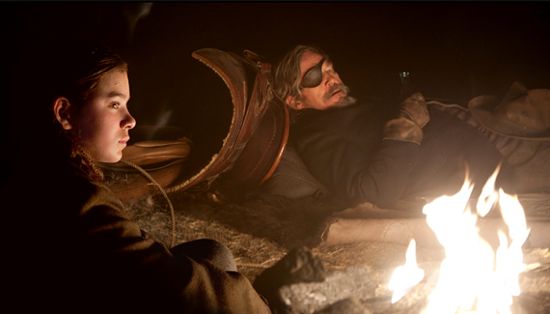
Quint: That’s awesome! I love hearing about little tricks like that.
Roger Deakins: A lot of the film there’s not a conventional film light in it. There’s little strips of bulbs that are on flicker generators and things like that. I make up a lot of special instruments to light scenes like that.
Quint: I have to imagine it’s a little more freeing, that you have more room to play with a genre film. I mean, I love your work in Jesse James as well. It seems your eye is well suited for westerns and that it may give more license to play than a conventional drama or comedy.
Roger Deakins: It’s lovely doing a western, particularly Jesse James, which was much different than True Grit because it was much more of a visual poem, so the approach was slightly different. But every story demands a different approach as far as I’m concerned. I love the differences.
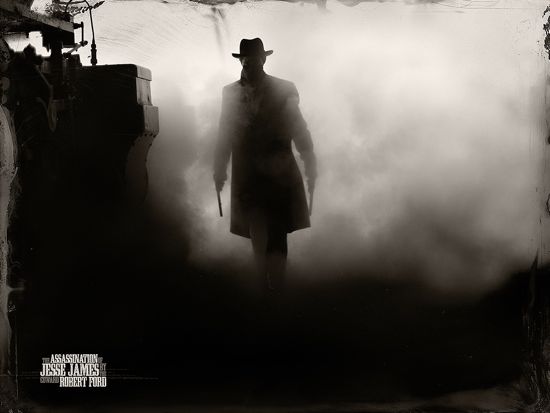
You get a script and you read it a couple of times to see if you like the script and understand the characters and then you start visualizing it and thinking “How can I bring this about?” Then you realize it’s something different than what you’ve done before and that comes from the script, really, not from anywhere else. If you don’t have a script and an actor and locations you wouldn’t have any cinematography!
Quint: That’s really interesting to me that you first look at characters and story when deciding to do a project and you don’t go directly to the visual aspect.
Roger Deakins: Absolutely. If something doesn’t move me in some way emotionally or interest me in some particular way I couldn’t work on it because it’d just become like you’re doing it as a formula, then.
Quint: So what do you have coming up next?
Roger Deakins: I’m in the middle of shooting, actually, with Andrew Niccol, a film called NOW, which is kind of a futuristic parable, I could say.
Quint: Oh yeah? Have you done a science fiction film before this?
Roger Deakins: No, not a true science fiction. The nearest I ever came to doing science fiction was 1984, which is hardly science fiction.
Quint: Ha! Not anymore, not in today’s world.
Roger Deakins: You’re right. It was funny because we were shooting that film in the year of 1984! That was very odd.
Quint: Thanks for taking the time to talk with me.
Roger Deakins: It was my pleasure.
Quint: I’ll be cheering for you come Oscar night!
Roger Deakins: Thank you very much. Whatever! (laughs) Take care!
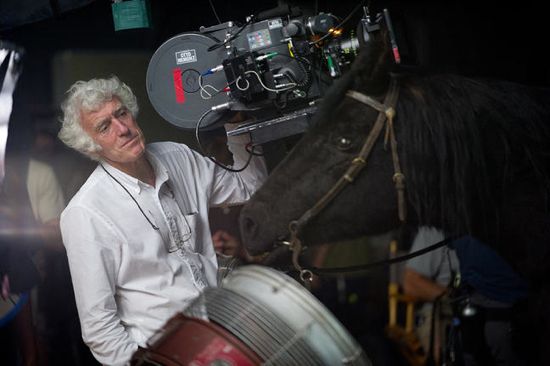
This man is one of the truest professionals in the business and it was an honor to pick his brain for a few minutes.
Hope you guys enjoyed the chat, a little bit different than what you’re used to reading about, I’d wager. Unless you have a subscription to American Cinematographer, of course.
-Quint
quint@aintitcool.com
Follow Me On Twitter

